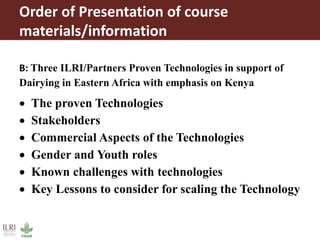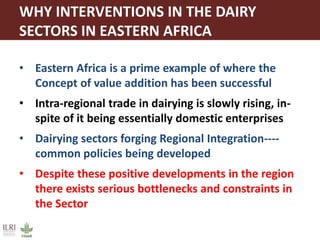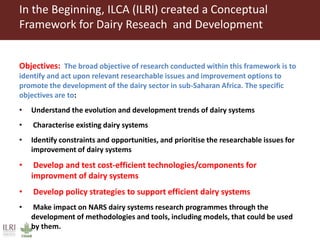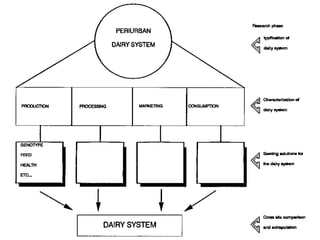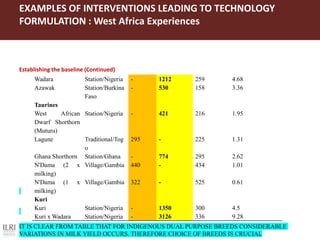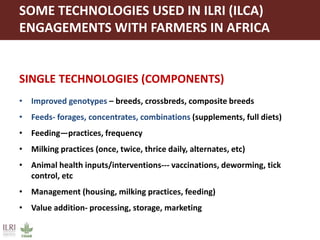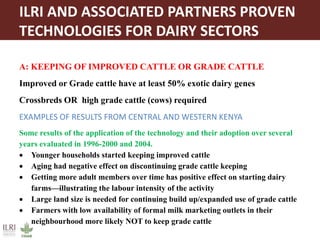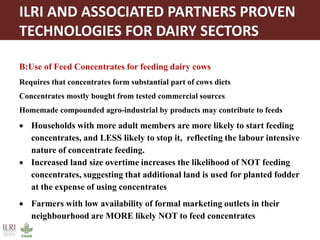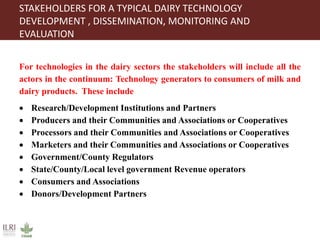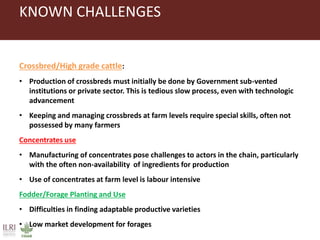The document outlines a three-day training workshop focused on improving dairy production among smallholder and medium-scale farmers in Eastern Africa, highlighting the need for technological interventions and the sharing of experiences. It discusses various challenges in dairy production systems, including low processing capacity, poor infrastructure, and limited technology use, while presenting proven ILRI technologies and successful interventions that have been implemented. Additionally, it emphasizes the role of value addition and inter-regional trade in enhancing the dairy sector's contribution to development and employment in the region.



